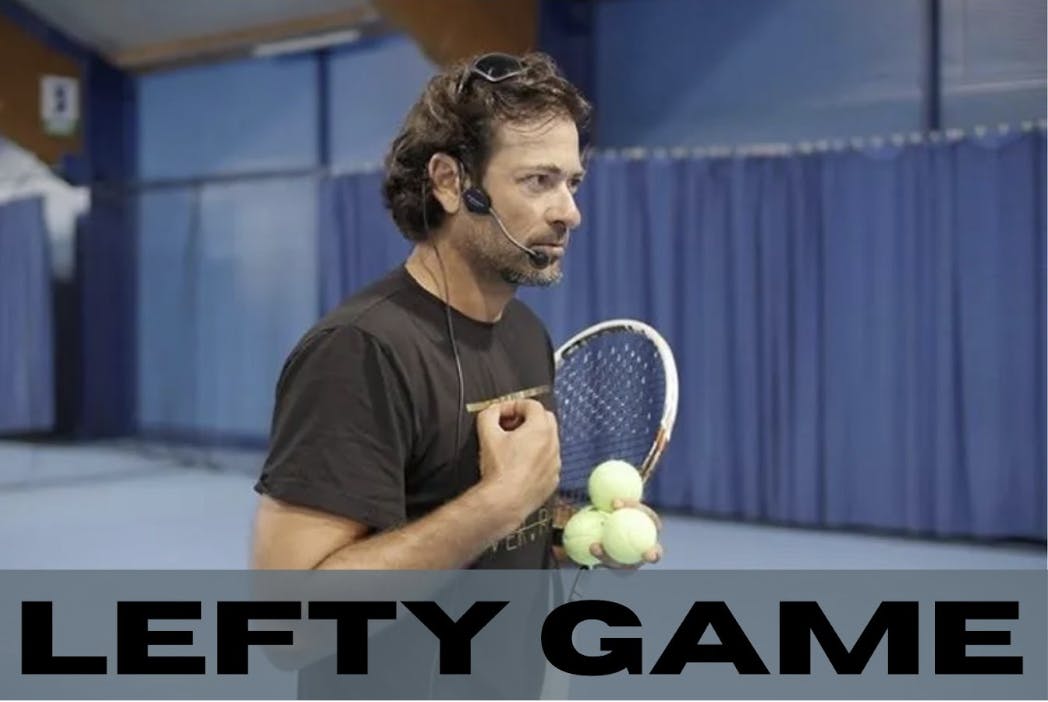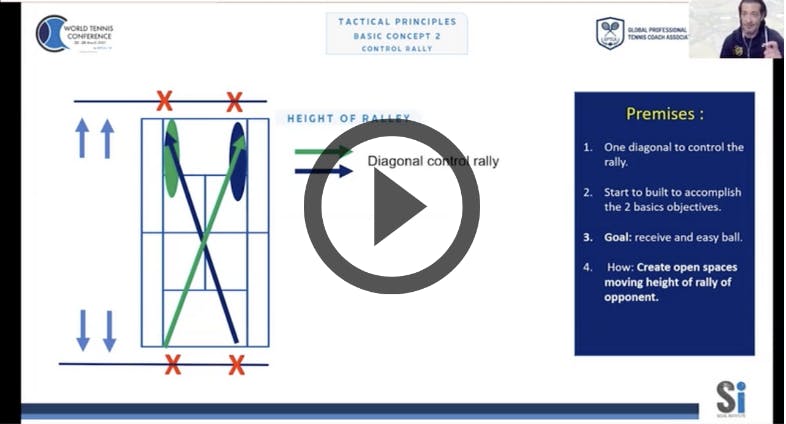Featured courses
- Four Tips to Turn Your Tennis Forehand Into a Weapon by Grant Young
- Tennis Legend Billie Jean King’s 4 Responsibilities as a Player by Grant Young
- Two Top Priorities For Success in Doubles Tennis by Grant Young
- Three of Tennis Whiz Lisa Dodson’s Tips to Improve Serves by Grant Young
- Three Elite Tennis Ball Machine Drills by Grant Young
- Three Keys For Correcting Tennis Serving Mechanics by Grant Young
- Five Tactical Tips to Win More Tennis Matches by Grant Young
- 4 Lessons Patrick Mouratoglou Learned From Coaching Serena Williams by Grant Young
- Four Effective Backhand Tennis Drills by Grant Young
- Two of Legendary Tennis Coach Paul Annacone’s Crucial Player Development Tips by Grant Young
- A Step-By-Step Guide To Mastering The Serve by Krsto Arsenijevic
- How to Dominate the Clay Court in Tennis by Krsto Arsenijevic
- 10 Essential Tennis Drills Every Coach Should Know by Brandon Ogle
- 8 Pre-Game Exercises to Prime Your Tennis Team for Competition by Neil Brown
- 7 Proven Tips To Develop Your Net Game in Tennis by Krsto Arsenijevic
- 10 Essential Tennis Drills Every Coach Should Know by Krsto Arsenijevic
- Developing Players - Two-handed backhand by Ramon Osa
- 6 Simple Warm-up Exercises For Tennis Players by Krsto Arsenijevic
- How to Beat a Serve-and-Volley Player by Krsto Arsenijevic
- How To Build Your Kinetic Chain Like Djokovic by Aiden Lefebvre
- How to neutralize a lefty in Tennis by Aiden Lefebvre
- 5 Tips To Improve Your Tennis Game Today by Krsto Arsenijevic
- Everything You Need to Know Before Buying New Tennis Shoes by Brandon Ogle
- Amp up your tennis practice with situational play by Neil Brown
- Tennis Equipment List by Brandon Ogle
- How to Master The One-handed Backhand in Tennis by Krsto Arsenijevic
- Modern High School Tennis Coaching Obstacles by Neil Brown
- Increase Your Tennis Fitness Level With 3 Easy Drills by Krsto Arsenijevic
- How to Successfully Hit a Two-Handed Backhand by Brandon Ogle
- How to Become a Grass Court Specialist in Tennis by Brandon Ogle
- How to Dominate the Hard-Court like Serena Williams by Brandon Ogle
- Hit a Drop Shot to Keep Your Opponent Off-Balance by Brandon Ogle
- New Tennis Injury Findings Linked to Neutral & Closed Stances by Oscar Wegner
- CHATTING WITH TENNIS PRO BRUCE CONNORS by Brandon
- How to Become a Mentally Strong Tennis Player by Brandon Ogle
- How to Win the Game of Angles by Hitting Cross-Court Shots by Eric Mahnke

How to neutralize a lefty in Tennis
Why does it always seem like left-handed tennis players are tripping up the righty tennis players? The truth is, left-handed players inherently have an advantage over right-handed players. Generally speaking, athletes don’t train as much on their lefty game because there are just fewer of them. It doesn’t really feel worth devoting so much time and effort for such a rare opponent. Meanwhile, lefties practice against their counterparts all day, meaning they quickly gain an advantage over their more common opponent. But beating a lefty is totally possible and, despite common belief, doesn’t require some crazy training regimen. With the helpful tips of ATP coach Gonzalo Lopez, I’ll show you various ways that you can take back control of the court and dominate against lefties and righties alike.
Controlling the height of the rally
Gonzalo has some excellent points on the tactical structure of lefty’s that can help you navigate the challenges of playing a tough lefty. First, Gonzalo talks about the importance of controlling the height of the rally. He describes the height of the rally as the place that you are standing on the court while you are running laterally. Your height can change depending on if you are near the service line or near the net. Gonzalo says that the goal is to change the height of your opponent’s height of the rally while maintaining your own height. The purpose of this is to take an offensive position and control of the rally. If you need to constantly adjust your position on the court, it will be harder to control the rally. So making them adjust will put you at an advantage.
While this can totally be used for both left-handed and right-handed athletes, it is especially important to remember against your lefty opponents since many tennis players have less experience defending against a lefty. Therefore, keeping an offensive position will ensure you the advantage.

Dominating the diagonals
Next, Gonzalo mentions that oftentimes, the diagonal will be your best shot and your opponent’s worst shot, though not always the case. When you hit the ball at the diagonal that is on your stronger side, you have more control over dictating your opponent’s height of rally. When you can dictate your opponent’s height of rally, you can make them move more and tire them out over the course of the match. This is especially important if you notice that your opponent is a slow runner or is slowing down in the middle of the match. Because moving their height of rally will ensure that they need to keep chasing the ball and minimizes the chances of them standing still.
On the flip side, if your opponent is faster than you, it will be easier for them to take control over your height of rally and therefore make you run more. That is why it is important to dominate the diagonals so that you can optimize your stronger side and have better placement of your shots.
Hitting at the diagonals is also an effective way to open spaces on the court, which is similar to moving the height of the rally, but along the other axis of the court. By opening up the other axis it provides you with opportunities to put the ball away, especially if your opponent has been running and is too tired to chase the ball. The sooner you can dominate one of the diagonals against a tough lefty, the less likely you are to be pinned into a corner, while the lefty pounds heavy forehands like Nadal did to Federer for the early part of their careers.
Hitting against left-handed tennis players can be a major challenge, especially if you’ve never faced such an opponent before. But fortunately, you can incorporate lefty-conscious strategies into your training regimen that is applicable to both left-handed and right-handed players. By manipulating the height of the rally and aiming for the diagonals, you will take control over the point and dominate your lefty opponents with ease.



